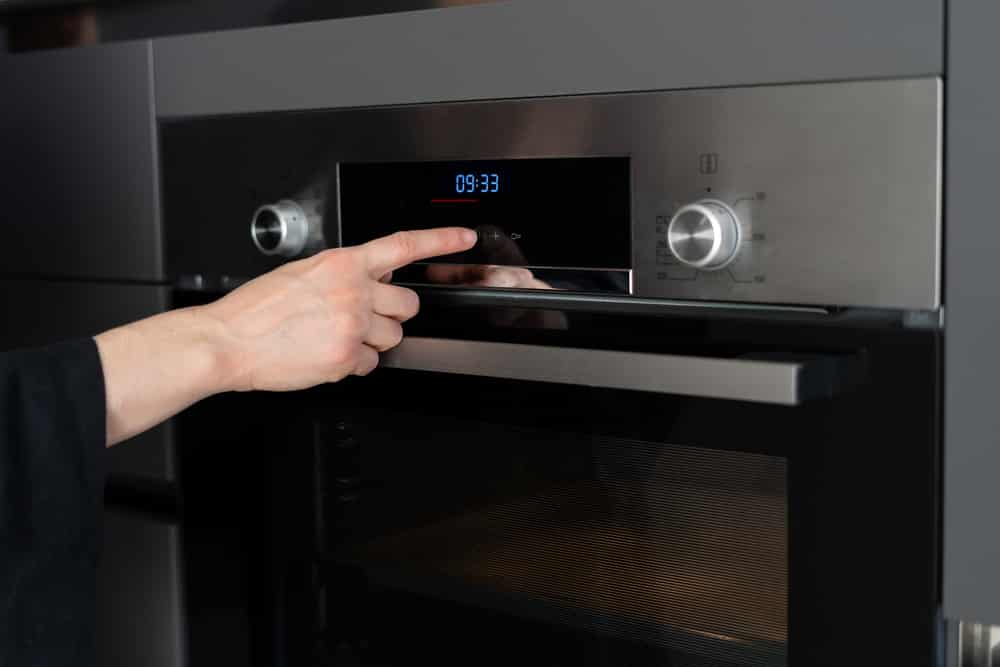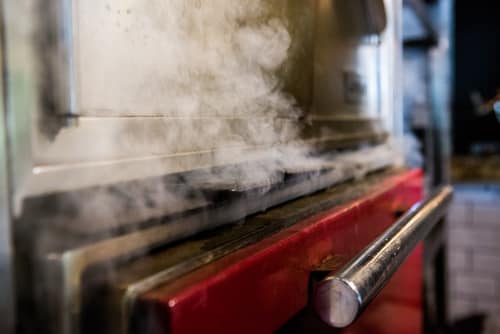
Ovens are convenient appliances that significantly ease the cooking process. They provide controlled heat at set temperatures, so your delicious meals are cooked to perfection.
Ovens are also excellent for people who like multitasking or are generally busy with work or kids and can’t pay their full attention to cooking for hours.
Unfortunately, ovens have a small downside- cleaning. Cleaning the oven, especially if you’ve made greasy food and haven’t cleaned it after multiple uses, is no less than a challenge.
For this reason, many advanced ovens are integrated with the self-cleaning feature, including the Frigidaire ovens. However, this feature is quite notorious for its demerits, and experts don’t really recommend using it.
Understanding The Self-Cleaning Oven
The self-cleaning ovens are basically designed with a self-cleaning feature with which the cooking splatters and spills are burnt by using extremely high temperatures to clean them off.
The self-cleaning feature takes a few hours to complete, and it tends to lock the door automatically until the oven is properly cooled down.
In addition, they are designed with more housing insulation to manage higher temperatures, promising efficient cooking.
Why Must You Cancel/Stop The Self-Cleaning Feature?
As we shared before, experts really don’t recommend the self-cleaning feature, and there are several reasons behind it.
How To Stop Self-Cleaning Feature On Frigidaire Oven?
1. It Can Emit Dangerous Fumes
To begin with, the self-cleaning feature can create unhealthy and dangerous oven fumes and toxic gases which are released into the air and have an intense odor. These fumes can circulate around the home and create a bad smell.
This happens when you don’t properly remove bigger chunks of food debris along with collected fat or liquid. The grease burns, creating excessive smoke.
Oftentimes, food pieces don’t break down into ashes properly and bake on the oven surface even harder. This can make cleaning by hand tougher.
Sugary foods, liquid spills, and caramel can also create enough smoke to be detected by fire alarms and set them off. Smoke also causes breathing issues and a burning sensation in the eyes.
What’s worse is that many studies have discovered that carbon monoxide may be created when food residue and debris are burned during self-cleaning cycles of ovens.
Carbon monoxide is infamous for being poisonous to humans, all while being odorless, colorless, and tasteless. That’s why it’s imperative to open all windows and run an exhaust fan when setting your oven for self-cleaning.
As self-cleaning carries this major potential hazard, it’s best to stop the function. Plus, if smoke is detected by fire alarms, it can become a whole ordeal.
And remember, the more burned and baked food debris and grease is, the tougher it will be to clean. It’s best to do major cleaning by hand.
2. Fire Hazard
Secondly, the self-cleaning feature presents some fire hazards. Even if you’ve thoroughly removed all the bigger food particles, you’ll likely have fat, grease, cooking oil splatters, and spills to burn off.
For ovens, having an inside temperature exceeding 500° C, and a flashpoint (which is the temperature at which food items can self-combust without needing an ignition source) between 750 to 815°F° or 400 to 435° C, your leftover pizza or chicken grease can start a fire.
This poses a major safety risk. And since you have to do at least half the cleaning yourself anyway, it’s best to clean your oven after every run by hand– this will be quick and requires only some grease-cutting solution like dishwashing liquid and vinegar.
It’s also important to note that if your oven accidentally catches on fire during a self-clean cycle, avoid trying to put the fire out.
A sufficiently cooled-down oven door may tempt you to open it, but doing so would cause oxygen to rush inside, adding fuel to the fire. Try to get the oven outside your house for safety.
If the fire is spreading, immediately leave the vicinity and contact 911.
3. Major Parts Damage
Lastly, the high temperatures needed to run an efficient self-cleaning cycle also puts strain on different parts of your oven and can compromise the functioning of major components.
One of the most common damages associated with self-cleaning is the oven door locking mechanism getting stuck. This locking system works as an assembly to lock and unlock the door automatically after one cycle is completed
However, when it malfunctions, it can get locked permanently, prompting you to call oven repair services. Luckily, the replacement isn’t too costly.
Another part that can get damaged by overheating due to self-clean cycles is the thermostat. This is an essential safety feature that controls the temperature settings.
Thermostats are positioned on the oven walls or oven top and high heat can pop these. This results in inaccurate temperature readings that can overcook or undercook your food.
Ovens may stop working entirely if they detect the thermostat is broken as well. Professional repairs will be needed.
4. Electronic Board Burn
An oven’s touch panels and electronic board are the control units that pair and work together to ensure the appliance follows your commands.
Unfortunately, these are also affected by intense heat and can produce a variety of confusing error codes. Repairing or replacing them is quite costly. In addition to the error codes, ovens may also turn off and on at will when the electric board is damaged.
Besides these, the open wires and mainboard connectors present on the back wall can be damaged by the excessive heat produced during self-cleaning. However, this is rare, as the wires have thermal insulation.
Only prolonged exposure to high heat can lead to large-scale damage. If you run self-cleaning cycles often, the insulation may melt and cause wire damage. This requires significant troubleshooting and the repairs can cost hundreds of dollars.
5. Miscellaneous Damage
Many other miscellaneous elements and oven components can face damage by overloading heat. These include light bulbs, glass housings, thermal sensors, enamel insulation, etc.
This form of damage is uncommon and only results after continued usage of self-cleaning functions. Running the cleaning mode for longer than advised on the user manual can burn the compartments too.
So if your oven shows an unexpected error code after using the cleaning functions, it’s likely related to damage.
If these issues concern you but you don’t know how to stop the self-cleaning feature, we’ve got your back.
How To Stop Self-Cleaning Feature On Frigidaire Oven?
The self-cleaning ovens are designed with locks to prevent the door doesn’t open up accidentally during the cleaning cycle.
However, the oven door tends to get locks, and the unlocking methods largely depend on the locking position of the oven door (if the door was locked in the open position or close position).
This is because if the door was locked open, you can simply press the light switch, program the self-cleaning cycle, and wait for a few seconds. Then, just cancel the cycle, wait for a few seconds, and you will be able to close the door.
On the other hand, if the door was locked closed, you can simply unplug the Frigidaire oven and open the door.
So, that’s how you can stop the self-cleaning feature on the Frigidaire oven, in a few simple steps, depending on the locking position.
The Bottom Line
The self-cleaning ovens have become a topic of debate as of late, as the self-cleaning function tends to use hazardous levels of heat to burn off food residue.
Sure, it delivers convenience, but you need to be extremely particular about maintaining a safe distance when the self-cleaning cycle is on.
You also need to clean the oven of excess debris and tough grease yourself before you run the self-clean function, so if you’re cautious about the fire and smoke hazard or oven damage self-cleaning poses, you can always wipe down the oven yourself.





